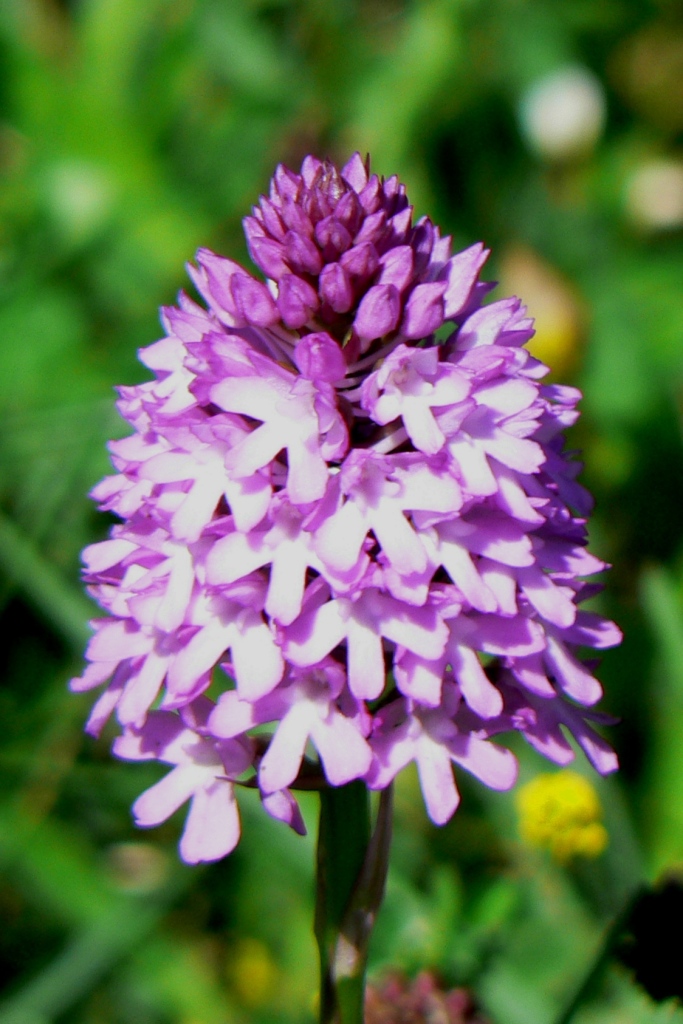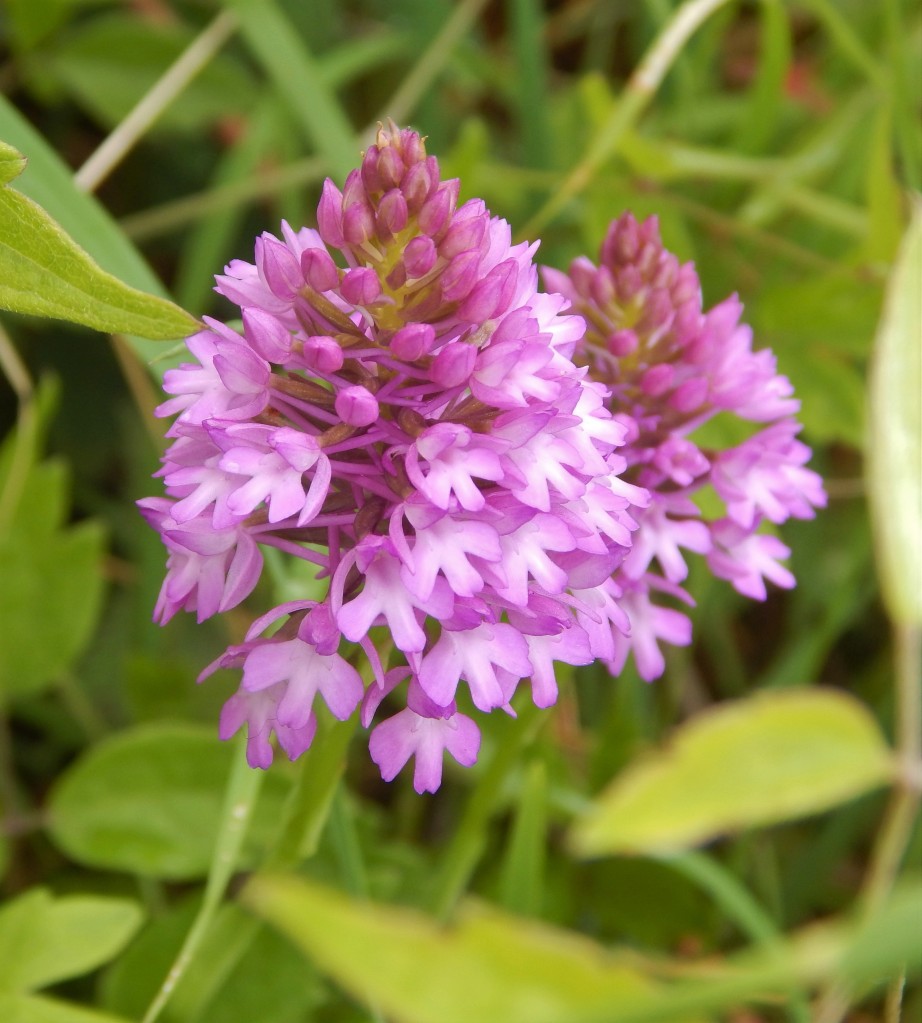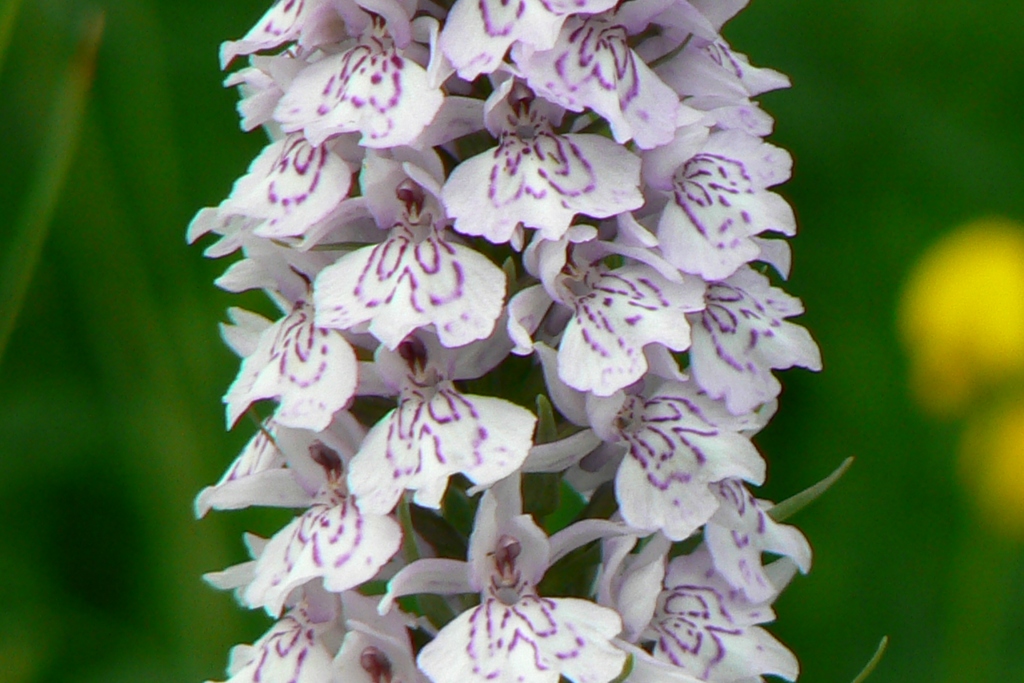
[112] Dactylorhiza fuchsia, Common Spotted Orchid
Introduction
Dacrylorhiza fuchsii, the Common Spotted Orchid, is the most common species of Orchid, found all over Europe. It has an attractively patterned flower, which is not spotted!
Taxonomy
Kingdom – Plants
Division – Vascular Plants
Class – Angiosperms (Flowering Plants)
Order – Asparagales
Family – Orchidaceae
Subfamily – Orchidoideae
Tribe – Orchideae
Genus – Dactylorhiza
Scientific Name – Dactylorhiza fuchsii
Name
Dactylorhiza is Ancient Greek for finger root and the species epithet is in honour of Leonhart Fuchs (1501-66) also the source of the name [153] Fuchsia.
Description
There are about two thousand species in the Tribe Orchideae, including [020] the Pyramidal Orchid.
There are some rarer species but in Britain the Pyramidal Orchid and Dactylorhiza fuchsia are the common ones. The Common Spotted Orchid the most common. Its attractive flowers are more cylindrical than the Pyramidal and about twice the size. They are usually white with purple markings but other varieties are available.



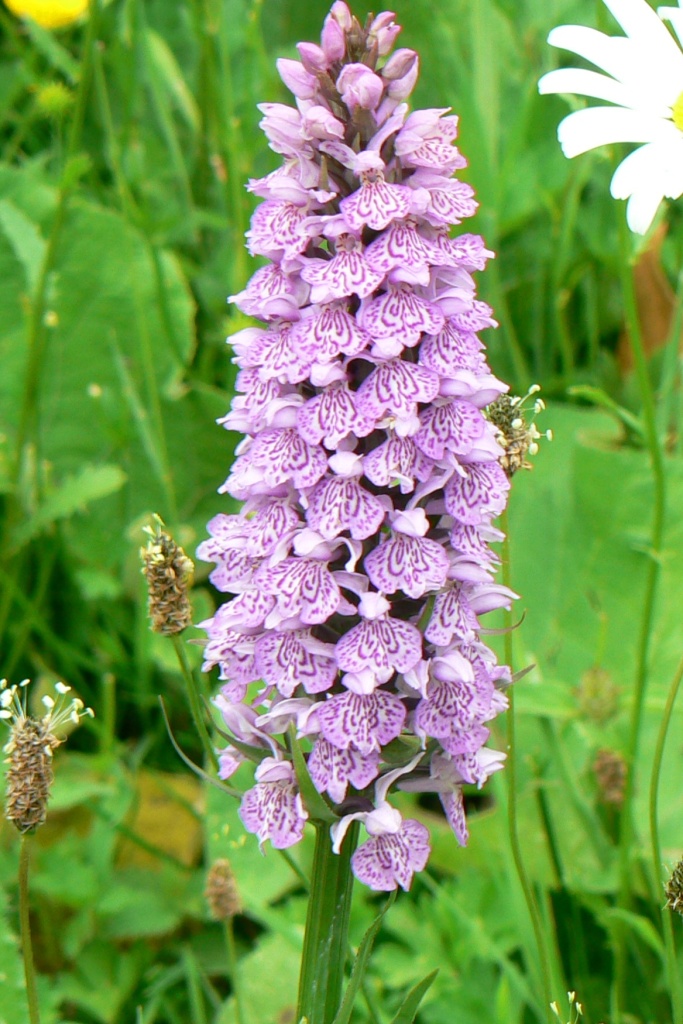
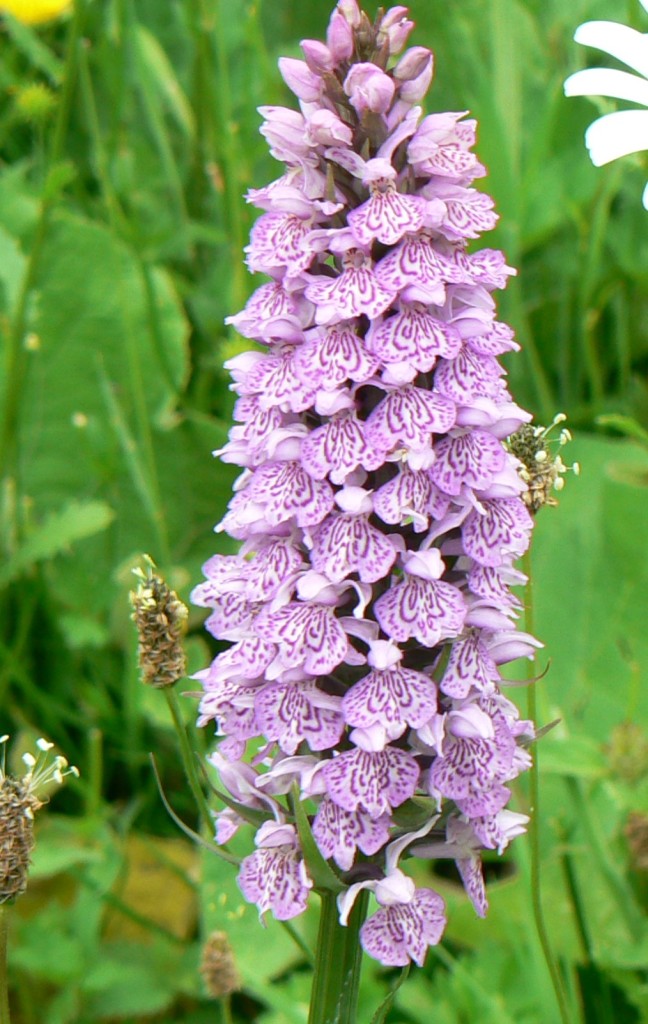
Habitat and use
The Common Spotted Orchid is widespread across Europe and parts of Asia. They are found in woodland and open country.
Cultivated versions are available.
Other Notes
Until I started writing this post, I always assumed that the flower of this species was called spotted. But the name come from its leaves. I don’t even look at the leaves of a plant with such an impressive flower but I was able to crop and enlarge some of my pictures and found these.


I see them in the same sorts of places as the Pyramidal Orchid where they are always more common – open land in nature reserves and commons.


